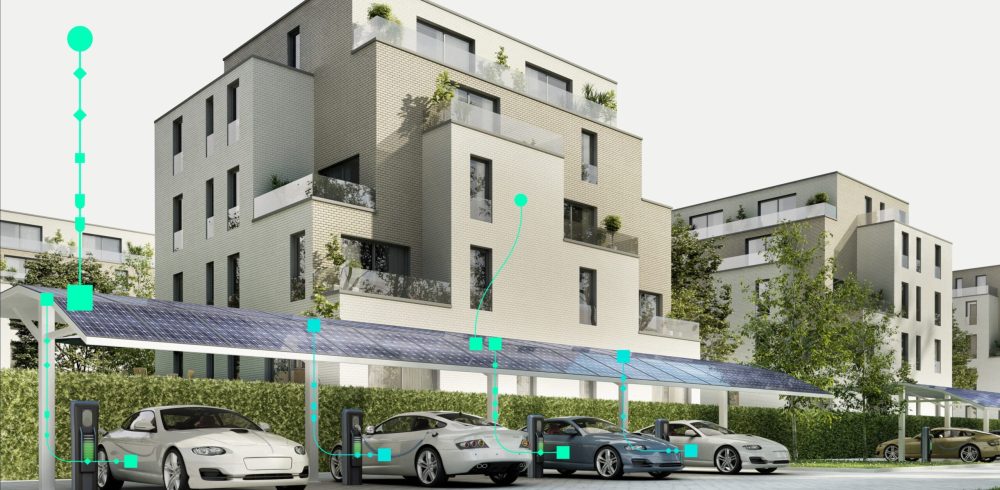How sustainable power systems present a system-of-systems challenge By Dale Tutt, Vice President of Industry Strategy, Siemens Digital Industries Software
Sustainable energy is a cornerstone of the global effort to reduce reliance on fossil fuels. Research and development work continue to deliver cleaner, more efficient, and more diverse ways of generating the energy we need to power modern society. As we improve our ability to produce clean energy, we should also consider the holistic environmental impact of power systems that convert energy into work – driving our cars, trucks, airplanes, and other machines. Creating sustainable power systems will be another key piece of our efforts to reduce emissions, but these systems are difficult to develop and implement. This is mostly due to the immense system-of-systems complexity involved in the engineering, manufacturing, implementation, and maintenance of a sustainable power system.
The need for sustainable power systems
In the US, transportation emissions contributed the largest share of greenhouse gas emissions in 2020, at 27% (EPA, 2022). In the same year, it is estimated that transportation accounted for 7.2 billion tons of carbon dioxide emissions globally (IEA, 2021). As we work to reduce our impact on the environment, reducing these emissions is crucial. This is a tall task to be sure, but one we can still achieve through continued innovation in sustainable technologies, including the systems that power our various vehicles and machines.
Several solutions to the problem of transportation emissions have been proposed, tested, and even put into production. The most prominent today is the electric powertrain. In the last five years, vehicle electrification has gained widespread, global support as a practical and expedient means of reducing carbon emissions in the transportation sector (figure 1). By powering vehicles with electricity instead of gasoline, we can eliminate the tail-pipe emissions that a traditional vehicle generates as it burns fuel, while delivering a comparable driving and user experience. As a result, this approach is gaining significant momentum and should continue to do so as more models are brought to market, costs fall, and new environmental regulations come into effect around the world.
While progress is being made, the electric powertrain still faces some challenges with respect to their overall impact on the environment. The same is true for other forms of alternative energy and sustainable power systems. To create a truly sustainable power system, companies should approach its development, implementation, and maintenance in the field from a complete, system-of-systems perspective. By doing so, they can account for and minimise the total environmental footprint of the system, while also facilitating an innovative and productive development environment for their engineers and partners.
Sustainability demands a system-of-systems approach
The challenge of achieving this system-of-systems approach to the development of a sustainable power system is monitoring and measuring the numerous aspects that affect a product’s or system’s sustainability. To do this, companies need an efficient way to keep track of the environmental specifics of the many components, materials, and sub-systems that go into a modern power system and do so across various connected industrial ecosystems. Once they have this information, they require a way to manage it and connect it to power system requirements to find synergies or uncover potential pitfalls for the sustainable power system. Finally, to be successful, companies must be able to do this efficiently, without wasting time and resources that could be better spent in further refining the power system.
For example, consider the sustainability decisions that go into the sourcing, transportation, and storage of hydrogen for a hydrogen fuel-cell aircraft. First, where is the hydrogen being produced and by what methods? Today, most hydrogen production uses steam-methane reformation, which consumes large amounts of energy and produces carbon dioxide as a byproduct. Steam-methane reformation facilities that employ carbon-capture technology can produce cleaner hydrogen, but they do so at greater cost. An entirely different process relies on electrolysis of water to create hydrogen without direct carbon emissions, though this process tends to be the most expensive. Finally, since both steam-methane reformation and electrolysis require energy, it is also important to consider whether this energy is being derived from fossil fuels or alternative sources of energy.
Additionally, how will the hydrogen be transported from its production facility to airfields, and then stored for service to the hydrogen fuel-cell airplane? Hydrogen may be stored in either liquid or gas form, but both require specialised tanks that can support either high pressures, for gas, or extremely low temperatures to prevent liquid hydrogen from boiling. Such infrastructure likely does not exist at most airports and will need to be constructed to enable onsite hydrogen storage. These storage considerations further impact options for transporting the hydrogen. While hydrogen pipelines do exist, they are built to serve chemical plants and petroleum refineries, not airports. Thus, the hydrogen required for the fuel-cell aircraft must be moved by trucks or other ground transport. The emissions of these ground transports must be captured and considered to create a complete sustainability picture.
Outside of the hydrogen, the aircraft manufacturer will also need a way to account for the materials used to construct the aircraft itself, including the hydrogen fuel cell, electronics, electric motors, and more. So, as a company developing a sustainable power system, how do you coordinate your development and implementation of the power system with a complex web of suppliers and partners across the globe to achieve a truly sustainable system?
Digitalisation provides foundation for sustainable development
Clearly the answer is digitalisation. Digitalisation allows companies of all sizes to develop collective intelligence to capture, organise, and manage the crucial sustainability metrics to develop truly sustainable power systems, across both the supply chain and lifecycle of the power system. Digitalisation enables companies to connect their entire lifecycle through a digital backbone, with information flowing bi-directionally throughout the organisation. Even partner companies can be incorporated securely into your digital backbone, ensuring faster and easier collaboration between organisations, and supporting accountability to overall sustainability goals.
Digitalisation provides a natural foundation for a system-of-systems approach to the design, manufacturing, and service of sustainable power systems. It can help companies manage the development of their power system (such as a hydrogen fuel cell), while also reckoning with the full sustainability picture of that system: from the installation of the power system to the energy, energy production, transportation, and more.
With a digitalised, systems engineering approach, sustainability requirements can be added to the initial product definition, making them traceable throughout the product development lifecycle. From the beginning, the product and production methods are created with holistic sustainability indicators – such as carbon emissions, pollutants, energy use, and other sustainability metrics – as requirements. Optimising for sustainability from the start minimises costly and time-consuming design changes or manufacturing modifications to reduce a product’s environmental footprint. Furthermore, these requirements can be cascaded throughout the supply or value chain, with automated reporting to account for the totality of the product’s development and creation, even those parts that are developed by suppliers and partners.
For the developer of the hydrogen powered aircraft in our example above, a digitalised, system-of-systems approach can help them set and execute on a set of sustainability requirements for the aircraft. These could include:
- Net zero carbon emissions across the entire development lifecycle and supply chain.
- Minimised material usage and waste due to prototypes, testing, and manufacturing mis-builds. This may also include targets for water and electricity usage during production.
- Targets for the use of recycled materials in the production of the aircraft, propulsion system, and other components.
Additionally, these requirements can flow quickly down throughout the organisation and supplier network. With requirements in hand, engineering teams can rely more on advanced simulation solutions to evaluate designs and test power system capabilities without using materials and resources on physical prototypes. Meanwhile, suppliers can be evaluated and selected based upon their ability to meet program requirements for emissions, energy use, and more from manufacturing to transportation. Automated reporting processes then help the manufacturer to gather reports and track the complete environmental impact of the aircraft and its power system.
Moreover, digitalisation is a powerful enabler of technological innovation, collaboration, and informed decision making. By investing in digital transformation, companies of all sizes can tackle the challenges of sustainable development by employing a system-of-systems approach that is built on digital threads of information. Such an approach will prove critical in our efforts to transform our industries, economies, and societies into greener, more sustainable versions.
References
EPA. (2022). Sources of Greenhouse Gas Emissions. Retrieved from United States Environmental Protection Agency: https://www.epa.gov/ghgemissions/sources-greenhouse-gas-emissions#transportation
IEA. (2021, November). Tracking Transport 2021. Retrieved from International Energy Agency: https://www.iea.org/reports/tracking-transport-2021
Manufacturing & Engineering Magazine | The Home of Manufacturing Industry News
















